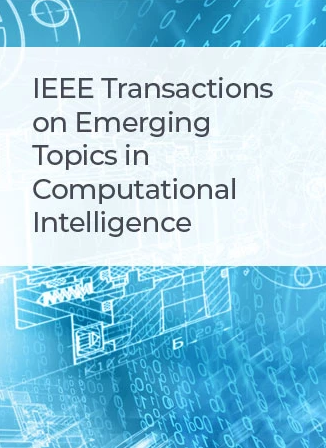Dendritic Neural Network: A Novel Extension of Dendritic Neuron Model
IF 5.3
3区 计算机科学
Q1 COMPUTER SCIENCE, ARTIFICIAL INTELLIGENCE
IEEE Transactions on Emerging Topics in Computational Intelligence
Pub Date : 2024-03-08
DOI:10.1109/TETCI.2024.3367819
引用次数: 0
Abstract
The conventional dendritic neuron model (DNM) is a single-neuron model inspired by biological dendritic neurons that has been applied successfully in various fields. However, an increasing number of input features results in inefficient learning and gradient vanishing problems in the DNM. Thus, the DNM struggles to handle more complex tasks, including multiclass classification and multivariate time-series forecasting problems. In this study, we extended the conventional DNM to overcome these limitations. In the proposed dendritic neural network (DNN), the flexibility of both synapses and dendritic branches is considered and formulated, which can improve the model's nonlinear capabilities on high-dimensional problems. Then, multiple output layers are stacked to accommodate the various loss functions of complex tasks, and a dropout mechanism is implemented to realize a better balance between the underfitting and overfitting problems, which enhances the network's generalizability. The performance and computational efficiency of the proposed DNN compared to state-of-the-art machine learning algorithms were verified on 10 multiclass classification and 2 high-dimensional binary classification datasets. The experimental results demonstrate that the proposed DNN is a promising and practical neural network architecture.树突状神经网络:树突状神经元模型的新扩展
传统的树突神经元模型(DNM)是一种受生物树突神经元启发的单神经元模型,已成功应用于多个领域。然而,输入特征数量的增加会导致 DNM 学习效率低下和梯度消失问题。因此,DNM 难以处理更复杂的任务,包括多类分类和多变量时间序列预测问题。在本研究中,我们对传统的 DNM 进行了扩展,以克服这些局限性。在所提出的树突神经网络(DNN)中,我们考虑并制定了突触和树突分支的灵活性,这可以提高模型在高维问题上的非线性能力。然后,通过堆叠多个输出层来适应复杂任务的各种损失函数,并实施了一种剔除机制,以更好地平衡欠拟合和过拟合问题,从而增强网络的泛化能力。在 10 个多类分类和 2 个高维二元分类数据集上验证了所提出的 DNN 与最先进的机器学习算法相比的性能和计算效率。实验结果表明,所提出的 DNN 是一种前景广阔且实用的神经网络架构。
本文章由计算机程序翻译,如有差异,请以英文原文为准。
求助全文
约1分钟内获得全文
求助全文
来源期刊

IEEE Transactions on Emerging Topics in Computational Intelligence
Mathematics-Control and Optimization
CiteScore
10.30
自引率
7.50%
发文量
147
期刊介绍:
The IEEE Transactions on Emerging Topics in Computational Intelligence (TETCI) publishes original articles on emerging aspects of computational intelligence, including theory, applications, and surveys.
TETCI is an electronics only publication. TETCI publishes six issues per year.
Authors are encouraged to submit manuscripts in any emerging topic in computational intelligence, especially nature-inspired computing topics not covered by other IEEE Computational Intelligence Society journals. A few such illustrative examples are glial cell networks, computational neuroscience, Brain Computer Interface, ambient intelligence, non-fuzzy computing with words, artificial life, cultural learning, artificial endocrine networks, social reasoning, artificial hormone networks, computational intelligence for the IoT and Smart-X technologies.
 求助内容:
求助内容: 应助结果提醒方式:
应助结果提醒方式:


